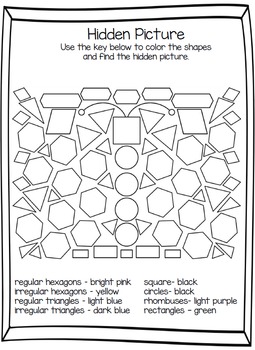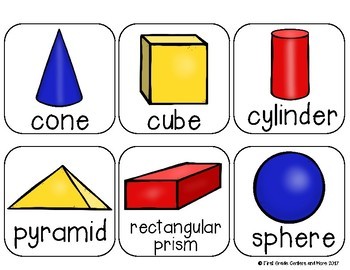
Pattern blocks are one of my favourite classroom materials. I created these two as example,s using a variety of shapes cut from textured papers and buttons. Kindergarten and school aged children will have lots of fun creating pictures with shapes. Adding a set of geometric cookie cutters ( like this one) to playdough play is a super easy way to add shapes to your day. Playdough is also a useful tool for exploring shapes. As a variation, make the shapes larger by using one pipe cleaner for each side of the shape. They can be bent and twisted to create a variety of 2D shapes. Pipe cleaners provide a great workout for finger muscles. Take the above activity one step further and make a self correcting puzzle by using the one colour for each shape, writing the name of the shape on each popstick and including the number of sides/corners. They make a great resource for creating 2D shapes.

Popsticks and matchsticks are such versatile learning materials. Photographing the shapes you find is another great idea, with the photos being perfect for compiling into your very own shape book. Older children can take a checklist or paper to record their findings on, while younger children will enjoy discussing what you see as you go. You can go on a shape hunt around your house, backyard, classroom or neighbourhood.
Two dimensional shapes first grade tv#
We see them in picture books, on TV shows and in every day life (does anyone else’s toddler insist on their sandwiches being cut into a certain shape?) In their first years of school children will build on this knowledge, learning about rectangles, ovals, hexagons, pentagons and octagons, just to name a few.Ī great way to kick start learning about shapes (whether it be at school or home) is with a ‘shape hunt’ – exploring and identifying shapes in our environment and everyday life. Ideas for Learning About 2-Dimensional Shapesīetween the ages of two and four years, children typically begin to learn the names of simple 2D shapes incidentally generally learning about circles, squares and triangles to begin with. But there is a whole other world of mathematics to enjoy and explore and that is the world of shapes! This post includes fifteen ideas for learning about 2D and 3D shapes (and their properties) in fun and ‘hands on’ ways!ġ5 Fun, Hands-On Activities for Learning About 2D and 3D shapes When we think of early mathematical learning, we typically think firstly of numbers. You may also be interested in my other products.A selection of fun, hands-on math activities for learning about 2D and 3D shapes. Thank you so much for your interest in my product. I use this with my 1st graders and have included pages both with and without the Common Core Standards printed on them as it could be easily adapted for K and 2nd grade students and/or used as enrichment/reinforcement activities. *Shape Riddles – Students match up the riddles with the correct shape. *Shape Surprise Riddle Flip Book Answer Page *Parts of a Shape Anchor Chart/Poster (black and white)

*Parts of a Shape Anchor Chart/Poster (color) – (sides & vertices) *2D Shapes Anchor Chart/Poster (black and white)

*Shape Recording Sheet - students calculate how many of each shape they used to create their pictures. *My Shape Picture – students create picture using 2d shapes. This pack is a great addition to your 2d shape unit. Are you looking for a fun, hands on way to teach 2-dimentsional shapes?


 0 kommentar(er)
0 kommentar(er)
